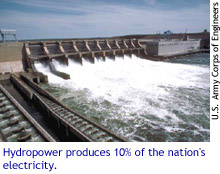|
|
|
|
|
Consumer Guides |
Government Guides |
Consumer News |
Consumer Guides
Index
Non-Partisan Congressional Budget Office CBO
Long-Term Budget Outlook
Obama Administration
Initiatives
The American Recovery
and Reinvestment Act of 2009
Auctions
Adoption
Alternative Energy
Presidential Energy Address
April 2005
Spectrally
Selective
Low-E Glass
Auto
Biology
Business
Business
Transportation
Directory
Presidential
Address:
Women's Small Business
Owners
Cell Phones
Computer
Consumer News Articles
Cosmetic Surgery and Financing
Culture
Digital Photography
Digital
Photography
Gov sites - Jobs
Disaster Help
Guide
to help
Rebuild Your Home
Drug and Alcohol
Earthquakes
Employment
Administrative Service Managers
Engineering,
Science, Computer
Systems Managers
Education
Educational Software
Distributors
Financial
Currency:
Buying, Selling
Redeeming
Merchant
Account Services
Costs and Fees
Fishing
Government Info
Homeland Security
Health
Health
Insurance
HIPPA
Government Health Guides
Identity Theft
Consumer
Confidential:
The Privacy Story
Insurance
Jets: Private
Jewelry
Machinery
Farm,
Food Processing
Packaging
Marriage
Happy vs. Unhappy
Marriage and Health
Patents & Trademarks
Patents, Trademarks, Copyrights
Real Estate
Mortgage
Modification
100 Q & A's of
Home Buying
Financing Energy
Efficient Homes
Sustainable Design:
Energy Efficient Homes
Taxes
Technology
Time
Travel
Tips
For Women
Traveling Alone
Other Online Guides
e-Commerce
Shopping
________
Disclaimer
HydropowerSource: U.S. Department of Energy
|
How Hydropower Works Most
hydropower projects use a dam and a reservoir to retain water from a
river. When the stored water is released, it passes through and rotates
turbines, which spin generators to produce electricity. Water stored in a
reservoir can be accessed quickly for use during times when the demand for
electricity is high. Most
hydropower projects use a dam and a reservoir to retain water from a
river. When the stored water is released, it passes through and rotates
turbines, which spin generators to produce electricity. Water stored in a
reservoir can be accessed quickly for use during times when the demand for
electricity is high.
Dammed hydropower projects can also be built as power storage facilities. During periods of peak electricity demand, these facilities operate much like a traditional hydropower plant — water released from the upper reservoir passes through turbines, which spins generators to produce electricity. However, during periods of low electricity use, electricity from the grid is used to spin the turbines backward, which causes the turbines to pump water from a river or lower reservoir to an upper reservoir, where the water can be stored until the demand for electricity is high again. A third type of hydropower project, called "run of the river", does not require large impoundment dams (although it may require a small, less obtrusive dam). Instead, a portion of a river's water is diverted into a canal or pipe to spin turbines. How Hydropower is Used Large and small-scale hydropower projects are most commonly used by clean power generators to produce electricity. The Buying Clean Electricity section provides information on buying electricity generated from hydro and other renewable resources in your state. Many large-scale dam projects have been criticized for altering wildlife habitats, impeding fish migration, and affecting water quality and flow patterns. As a result of increased environmental regulation, the National Hydropower Association forecasts a decline in large-scale hydropower use through 2020. Research and development efforts have succeeded in reducing many of these environmental impacts through the use of fish ladders (to aid fish migration), fish screens, new turbine designs, and reservoir aeration. Although funding has been limited, current research focuses on the development of a "next generation turbine, which is expected to further increase fish survival rates and improve environmental conditions. A very small hydropower (called microhydro) project can also be installed to meet the electricity needs of a single home or small business, and is especially useful for those in remote areas. Our Making Your Own Clean Electricity section provides more information on issues involved with producing your own electricity. Where Hydropower is Used To find out about the hydropower resources (both developed and undeveloped) in your state, visit the Hydropower Resource Assessment page of the Idaho National Engineering & Environmental Laboratory. |
|
|
Hot Link:
iTunes Gospel Rock Music
![]()
Rock version of
the Lord's Prayer
and more...
Presence
a unique find...
www.mycrossbridge.org

